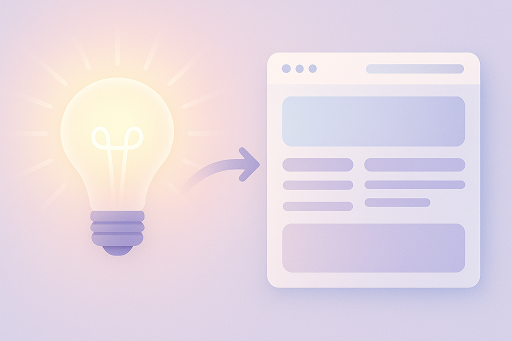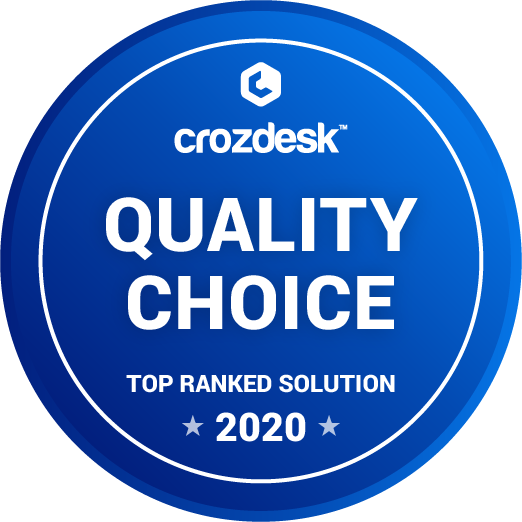
I’ve been helping entrepreneurs launch brands for over a decade. One thing hasn’t changed: the first impression still matters. Whether you’re a local service provider, a coach, or a startup, people will Google you before they call you. And if you don’t have a website, you might as well not exist.
But not every business needs a complex e-commerce platform or a giant content hub. What most people need is a brochure site: a simple, clear, professional website that tells visitors who you are, what you offer, and how to contact you. It’s your digital storefront, business card, and pitch — all in one.
Let’s break down what brochure sites are, why they’re essential for modern businesses, and how to build one today — even if you’re starting from scratch.
What Is a Brochure Website?
Think of a brochure site as a digital version of a printed flyer. It’s not built to sell products directly or manage complex user flows. It exists to:
- Present your business clearly
- Highlight your offer or expertise
- Provide contact and trust signals
Most brochure sites include 3 to 7 pages:
- Home (summary of who you are)
- About (your story, mission, or team)
- Services or Offerings (what you do)
- Portfolio or Testimonials (proof)
- Contact (form, email, phone, links)
And that’s usually enough. The goal is clarity, trust, and discoverability — not feature bloat.
Who Needs a Brochure Site?
In my experience, brochure sites are ideal for:
- Freelancers and consultants who want to showcase their work and attract new clients
- Small businesses needing a minimal online presence
- Startups testing a concept or validating a product idea
- Offline businesses looking to digitize their visibility
- Event pages, personal brands, or local services
If your business doesn’t revolve around online transactions, but you still need to be found, trusted, and remembered — this is your format.
Why Brochure Sites Work
Brochure websites succeed for one simple reason: they remove friction.
No login systems. No overwhelming menus. No complex UX. Visitors land, scan, and understand what you do in seconds.
That speed of comprehension matters. Especially in:
- Mobile-first browsing
- Referral traffic (someone sends your link)
- Local SEO (when users search “[your service] near me”)
But there’s a deeper benefit: focus.
You’re not trying to do everything. You’re doing the one thing that matters — presenting your value clearly and confidently.
Common Myths

Let’s tackle three misconceptions I often hear:
- “It’s just a static site. Why bother?”
Wrong. Brochure sites can be dynamic, responsive, and SEO-optimized — without being complicated. - “Nobody reads websites anymore.”
They don’t read fluff. But they absolutely scan for trust signals, contact info, and clarity. A good brochure site delivers all three instantly. - “Social media is enough.”
You don’t own social platforms. Algorithms shift. Accounts get flagged. A website is your owned, searchable, 24/7 online asset.
Building a Brochure Site: What Matters Most
From hundreds of projects I’ve seen (and many I’ve built), here’s what actually matters:
- Clear offer above the fold (who you are + what you do + CTA)
- Mobile-first layout (60-80% of your traffic is mobile)
- Fast load times (under 3 seconds)
- Trust elements (testimonials, logos, certifications)
- SEO basics (titles, meta, alt tags, readability)
- Contact options (form + email + links)
You don’t need a ten-thousand-dollar agency to get these right. You need the right tool.
Expert Tip
Don’t overthink your first version.
Build, launch, test. Iterate later.
Too many businesses waste months chasing perfection. A solid brochure site created in a day will always outperform a perfect one that never gets published.
Using AI to Build Your Brochure Site
This is where things get interesting. AI website builders have changed the game.
Instead of:
- Picking templates
- Writing every line of text
- Adjusting layouts manually
You simply describe your business in a few sentences, and the AI handles the structure, copy, visuals, and flow.
For example, in Turbologo’s free AI website builder, you:
- Enter what your business does
- Choose your preferred style and color palette
- Get a fully functional website — in minutes
Everything from the text to layout to images is generated and customizable.
It’s ideal for:
- Entrepreneurs who want speed
- Marketers launching landing pages
- Designers prototyping ideas
- Anyone with a budget of $0
And yes, you can try it for free — even publish on a turbologo.site domain.
Plus, if you’re creating a site, you’ll likely want a logo too. Turbologo lets you create a logo for your website in seconds with the same AI-powered ease.
Frequently Asked Questions
Q: Can a brochure site rank in Google?
Yes — if you follow SEO basics: proper structure, metadata, keywords, fast speed, and good mobile UX.
Q: What’s the difference between a brochure site and a landing page?
Landing pages are focused on a single CTA (e.g., signup or purchase). Brochure sites are multi-page, informational, and more holistic.
Q: Is a brochure site good for testing ideas?
Absolutely. It’s one of the fastest ways to validate a service or niche.
Q: What if I want to scale later?
Start simple. Good generators (like Turbologo) allow edits, expansions, and even export — so you’re never locked in.
Conclusion
You don’t need a massive website to make a powerful online impression. A brochure site does the job — efficiently, affordably, and beautifully.
If you’ve been putting off your digital presence, now’s the time to act. You can build and launch a site today — without code, budget, or delays.
Start with a clear offer. Use smart tools. Get online. And let your business speak for itself.
Raghav is a talented content writer with a passion to create informative and interesting articles. With a degree in English Literature, Raghav possesses an inquisitive mind and a thirst for learning. Raghav is a fact enthusiast who loves to unearth fascinating facts from a wide range of subjects. He firmly believes that learning is a lifelong journey and he is constantly seeking opportunities to increase his knowledge and discover new facts. So make sure to check out Raghav’s work for a wonderful reading.




